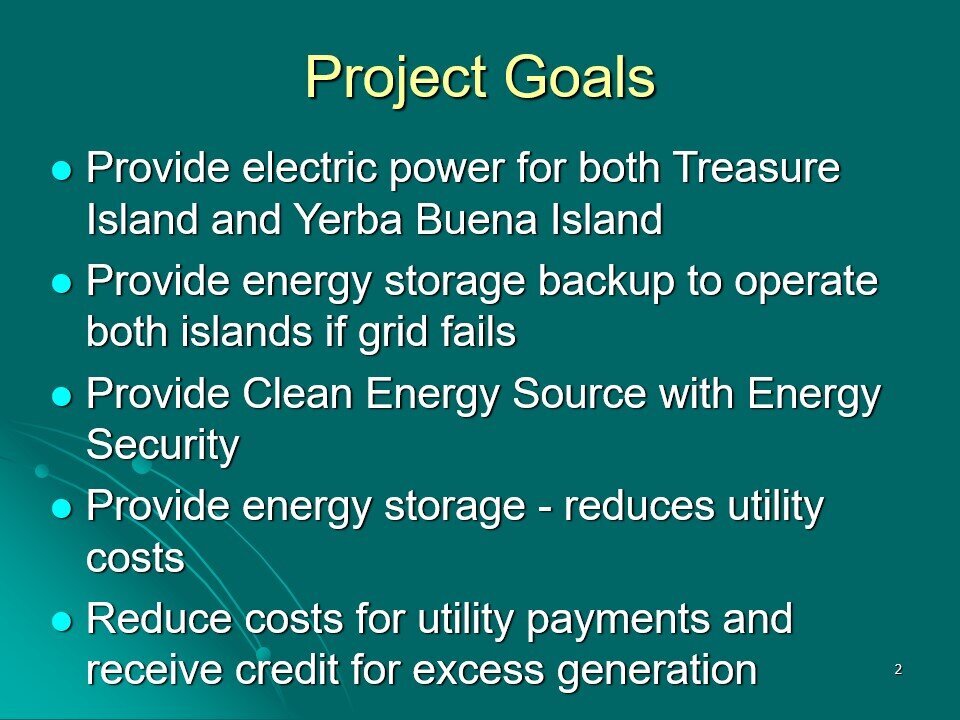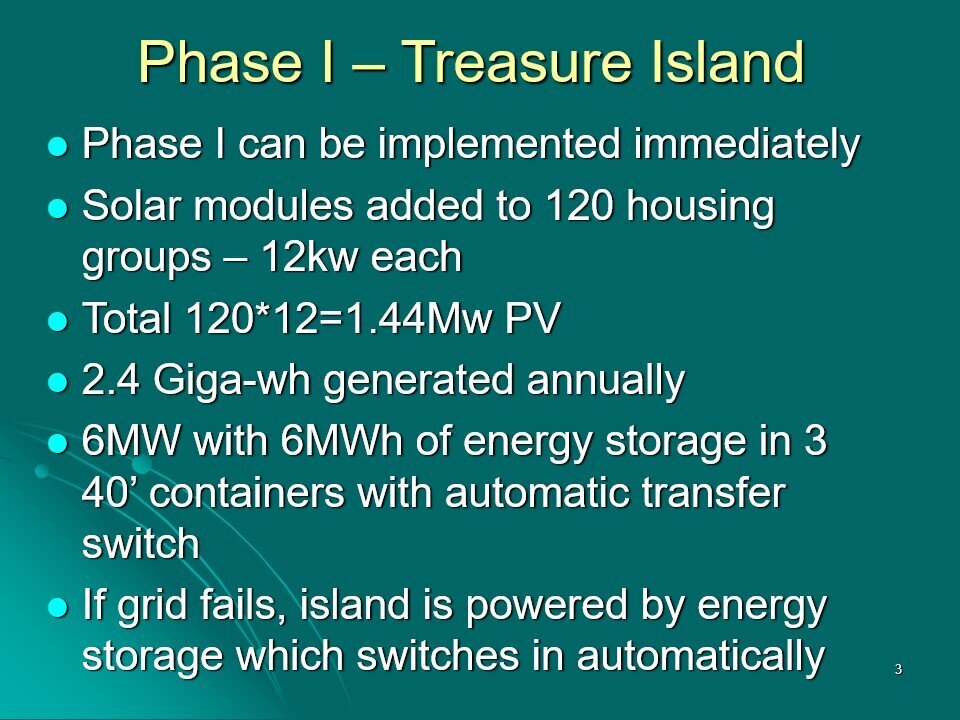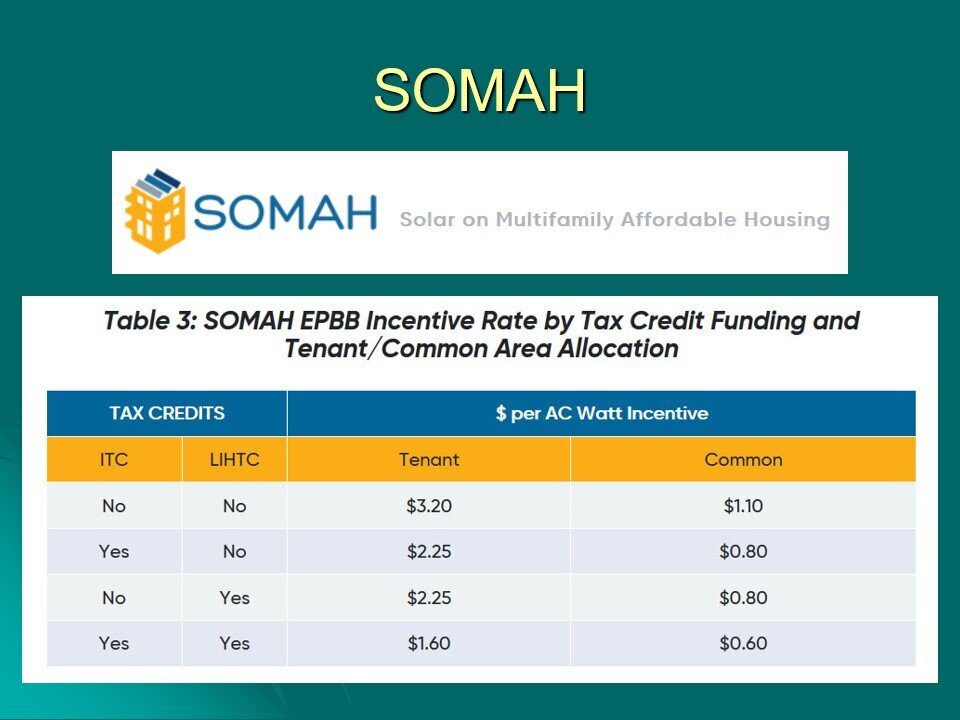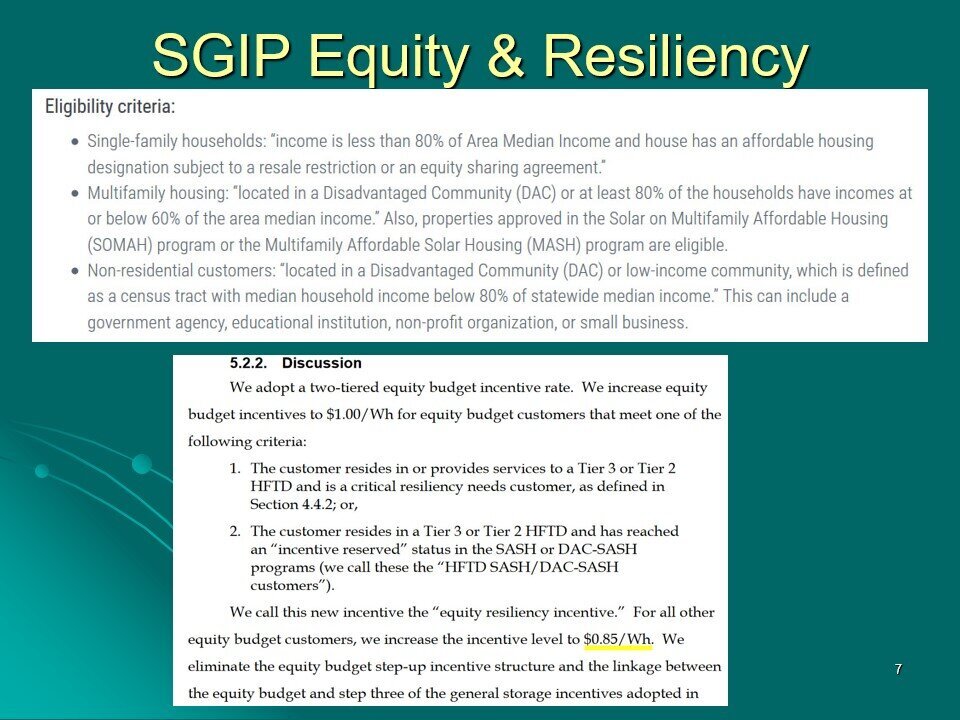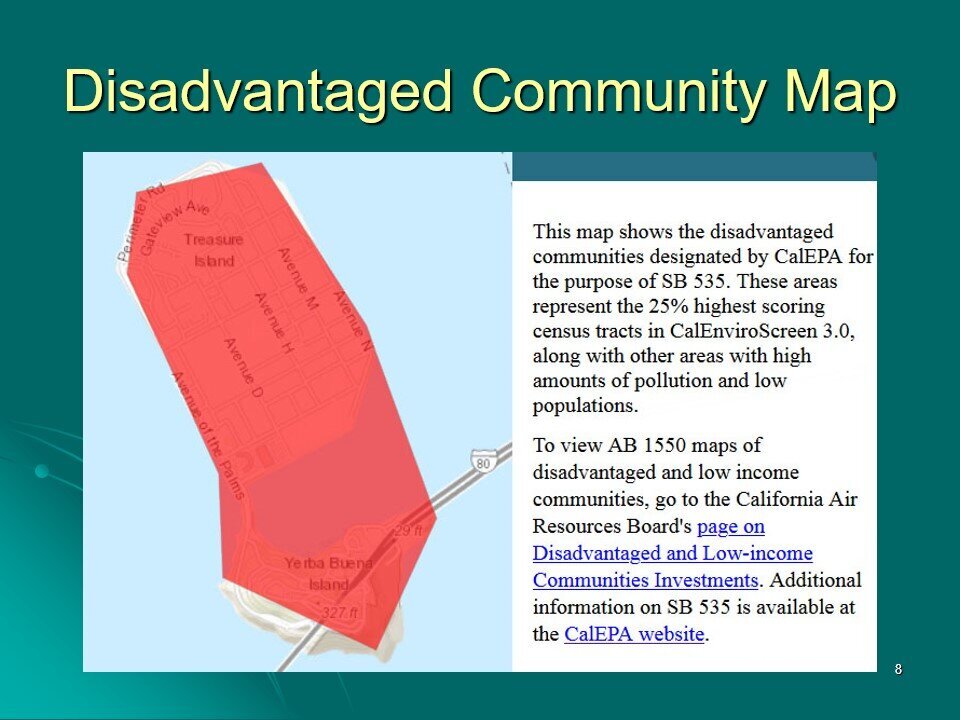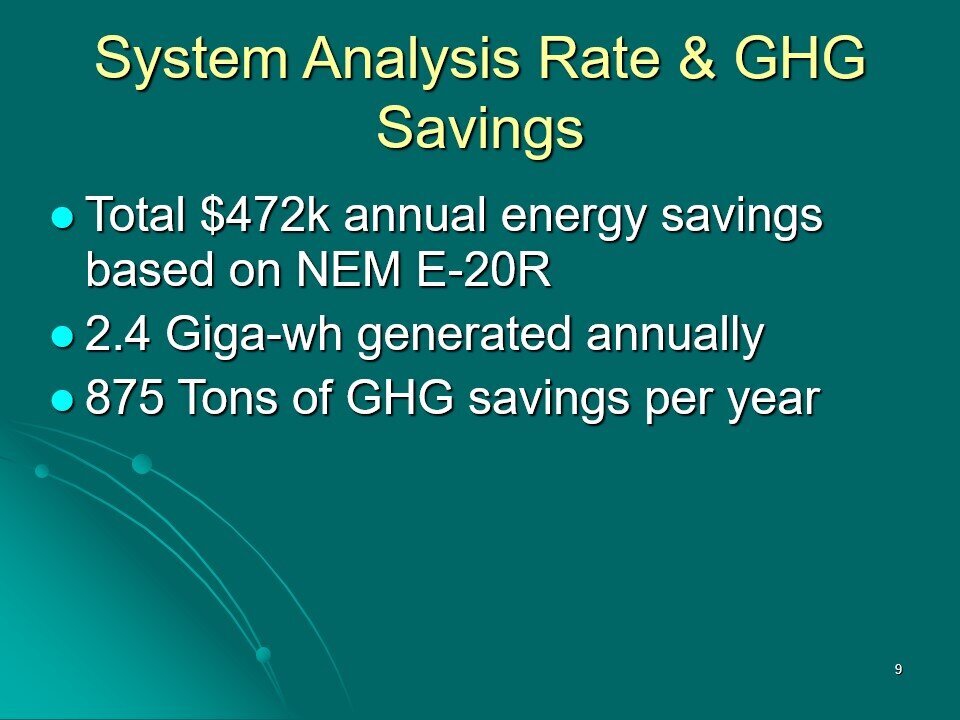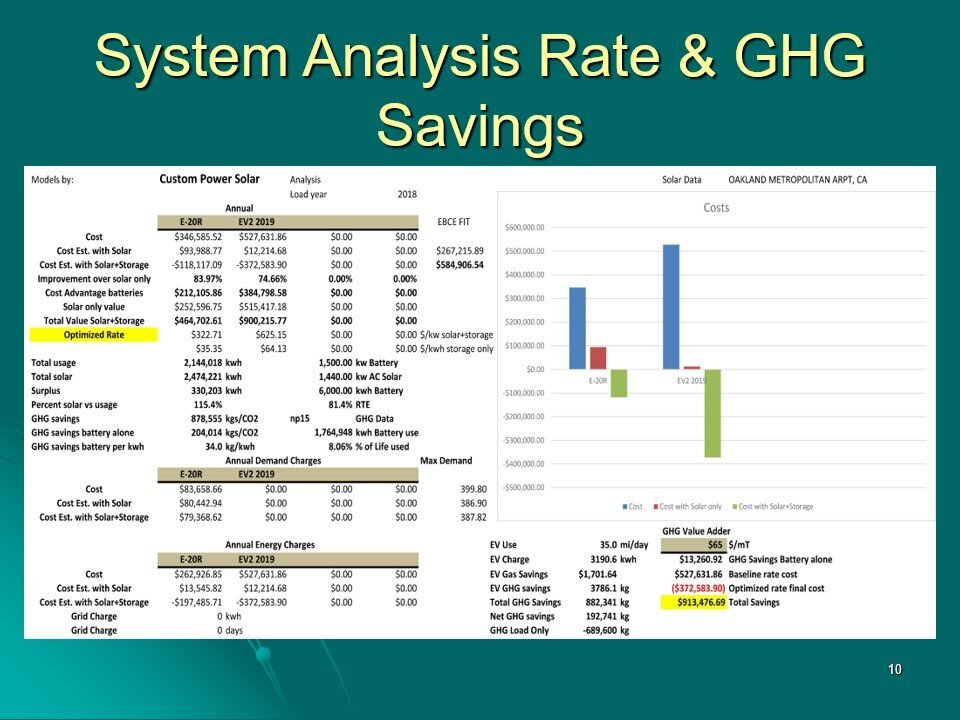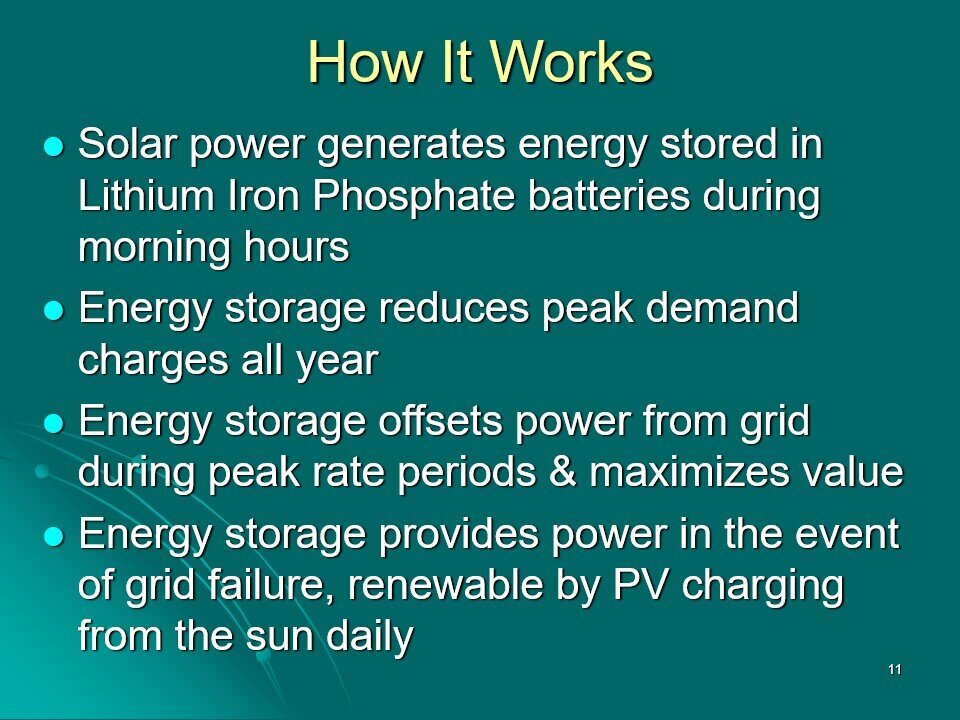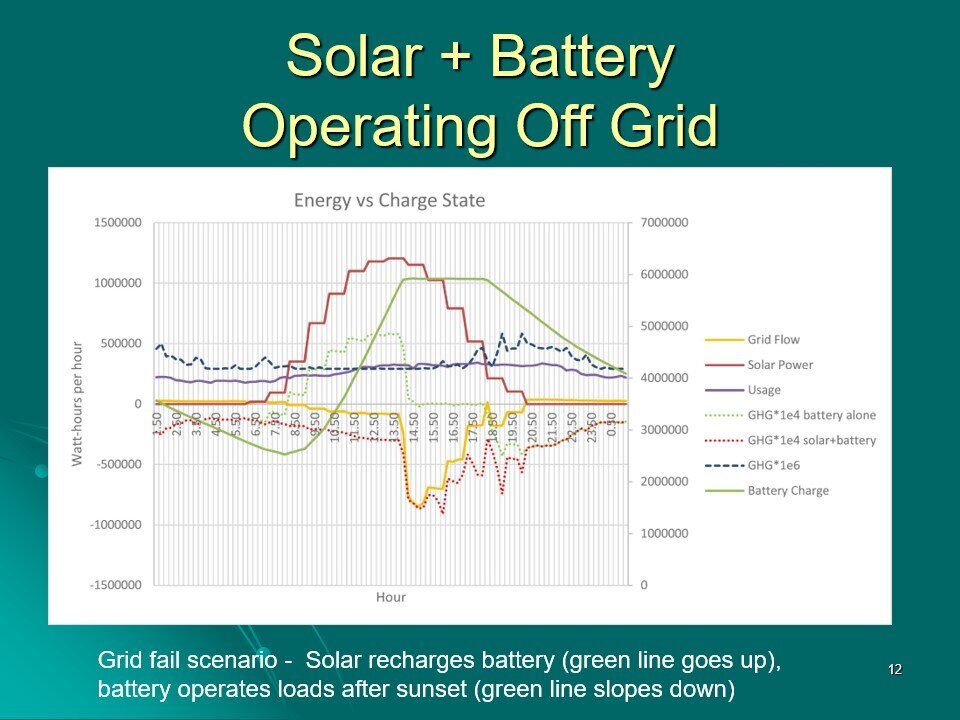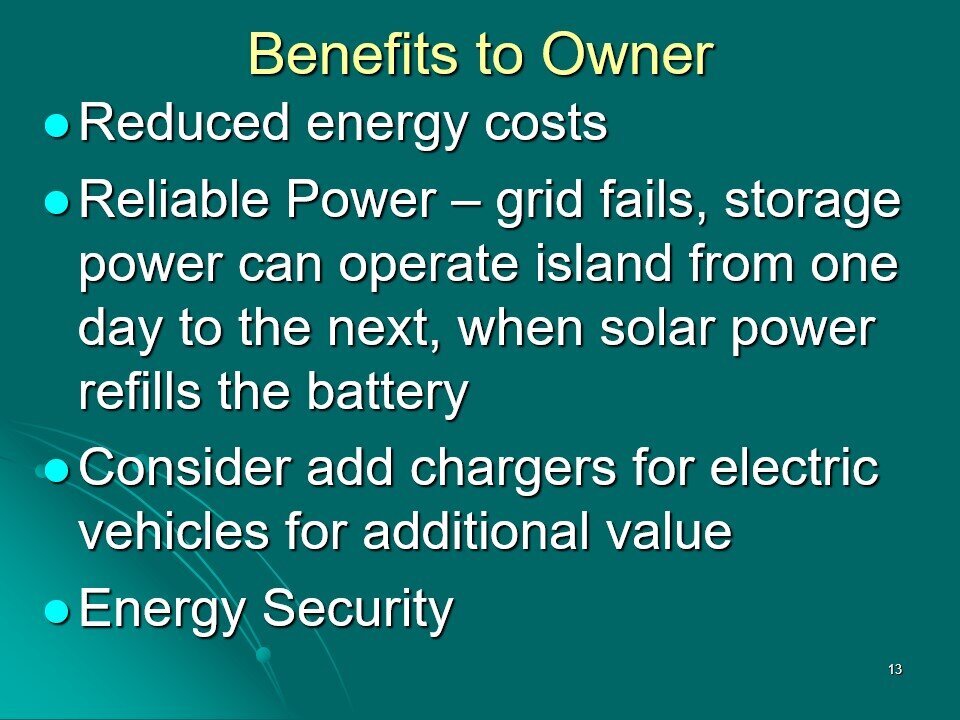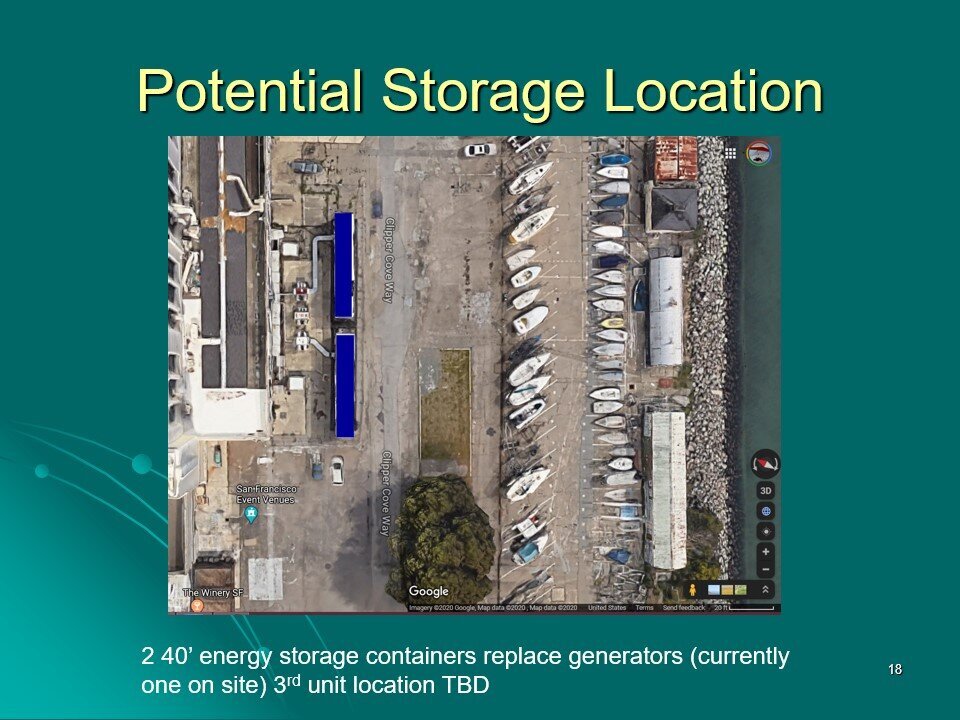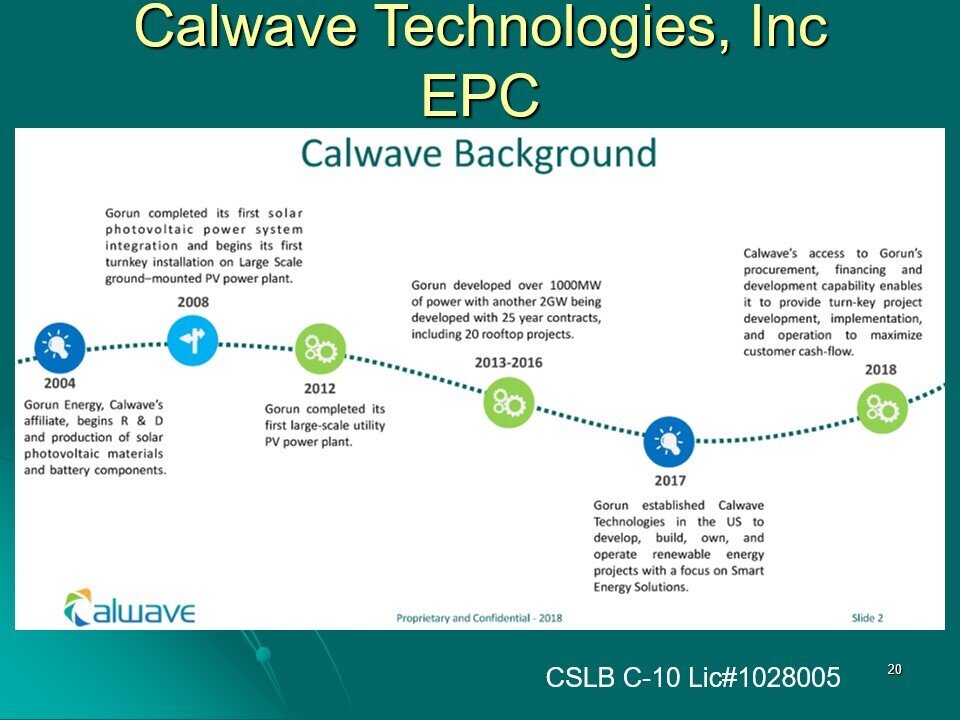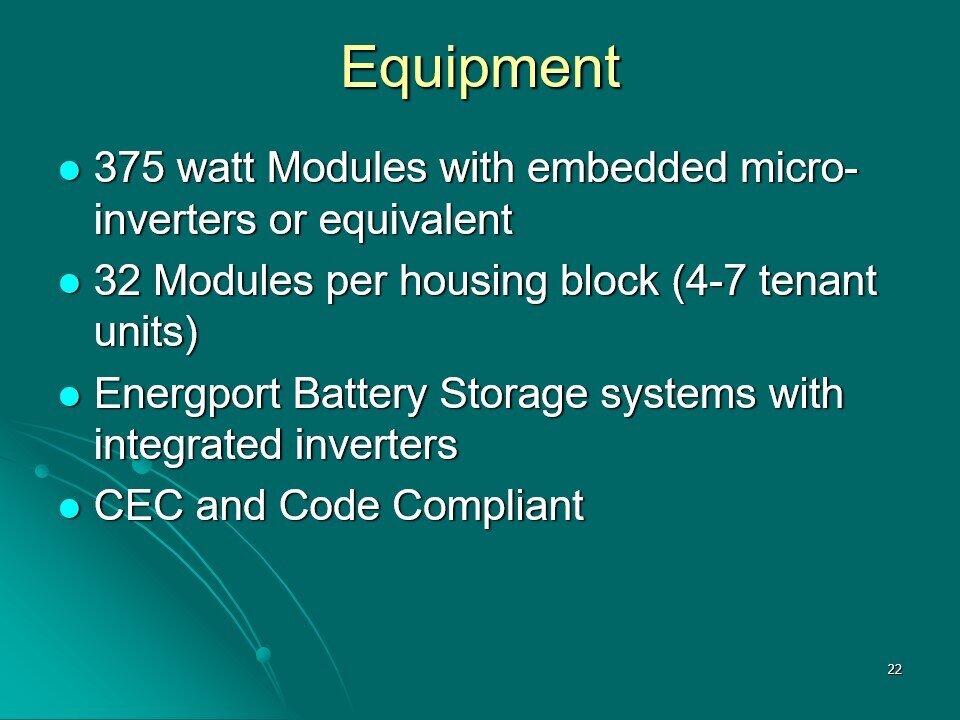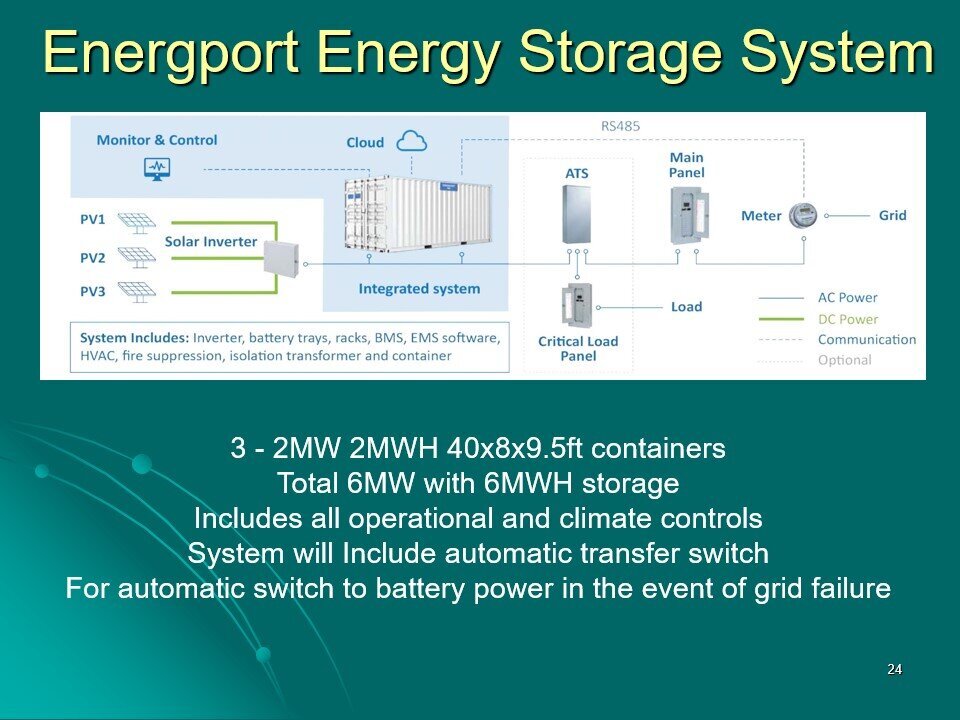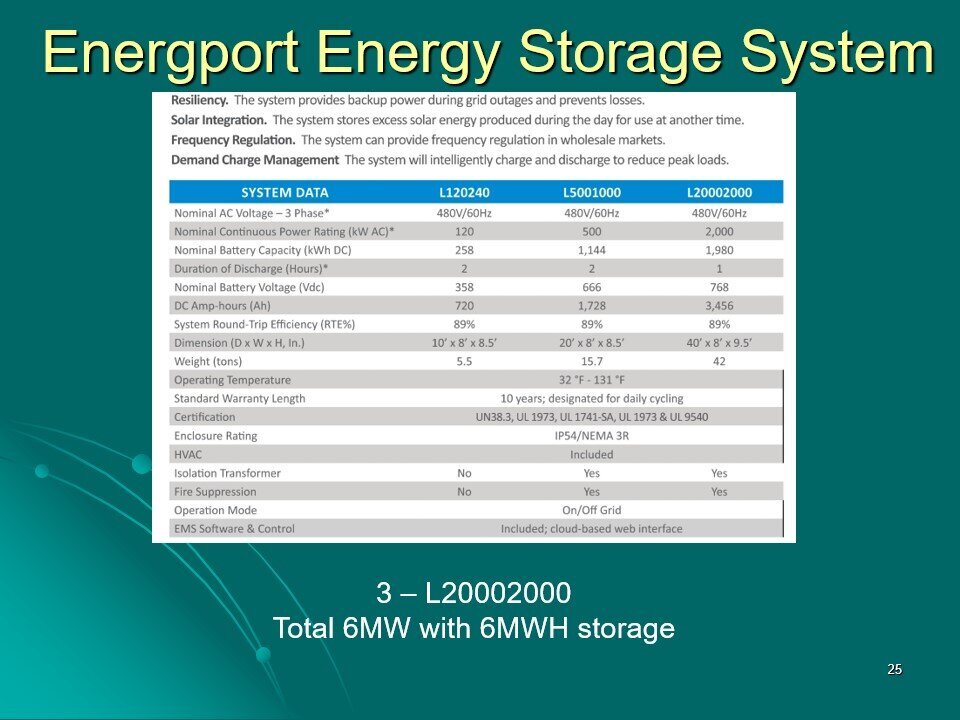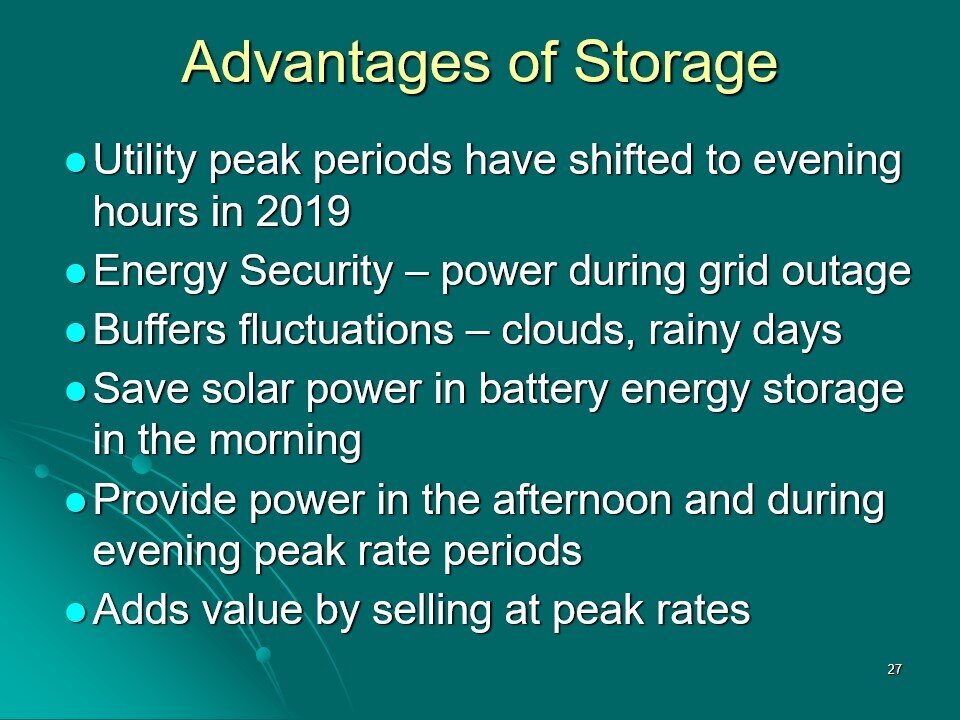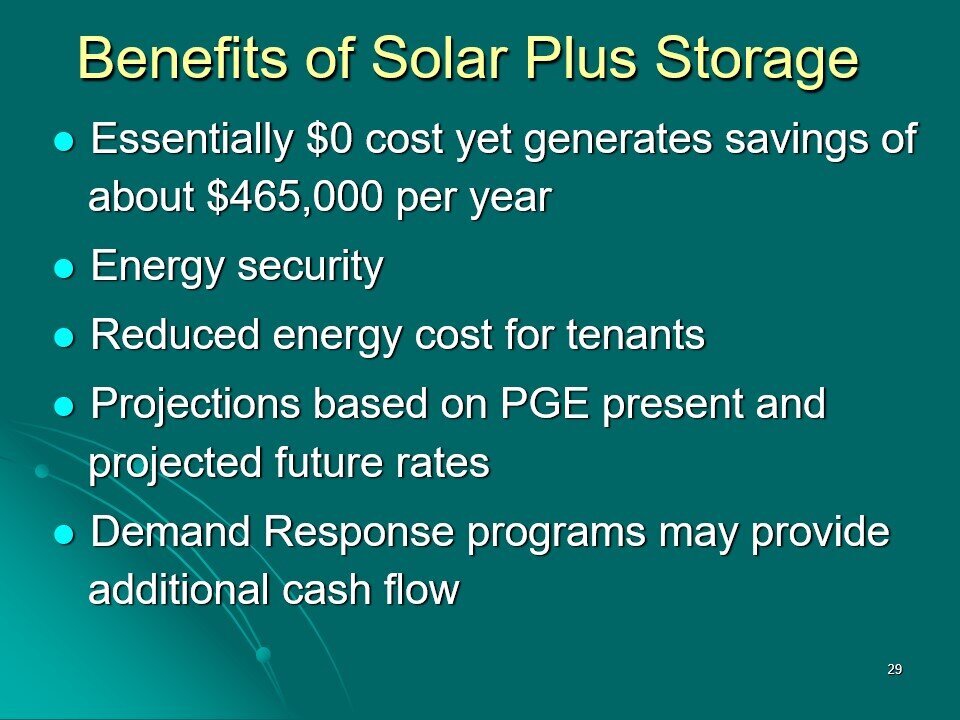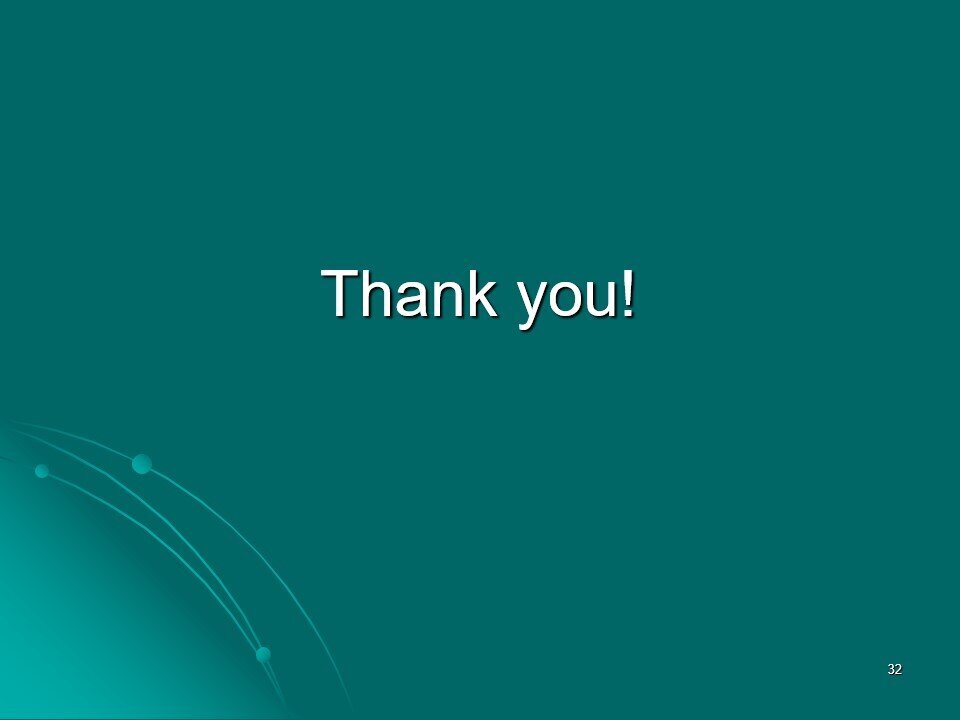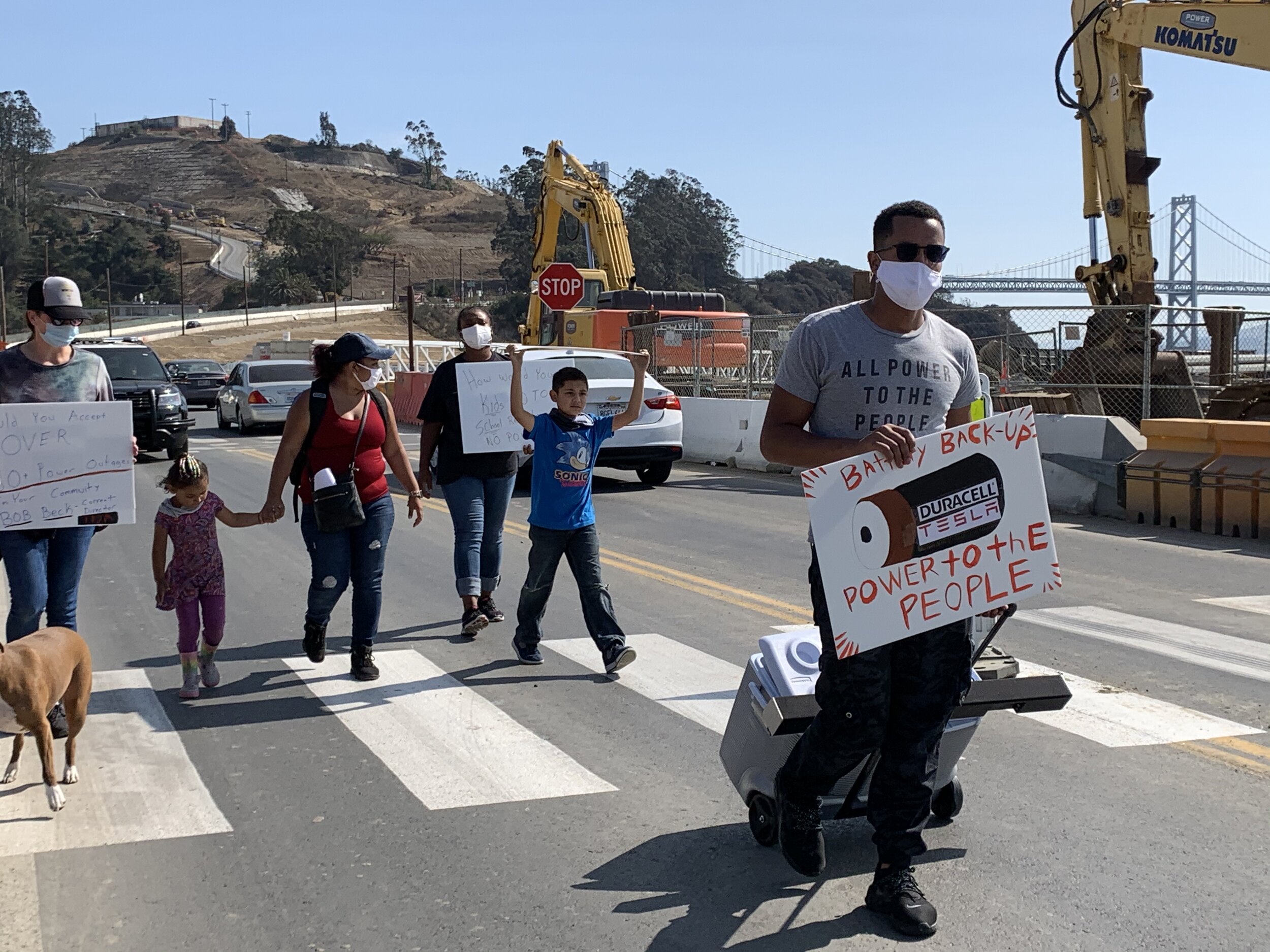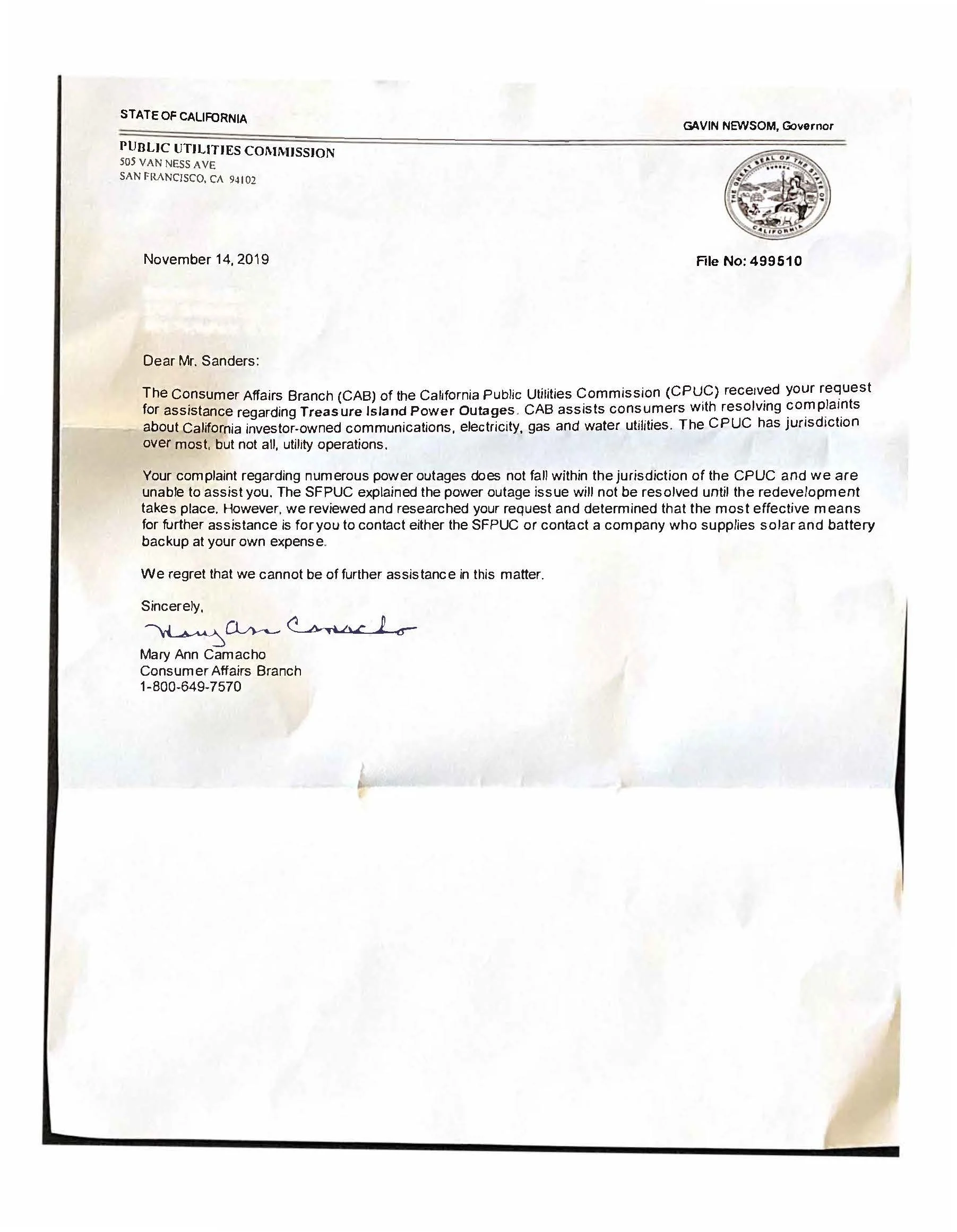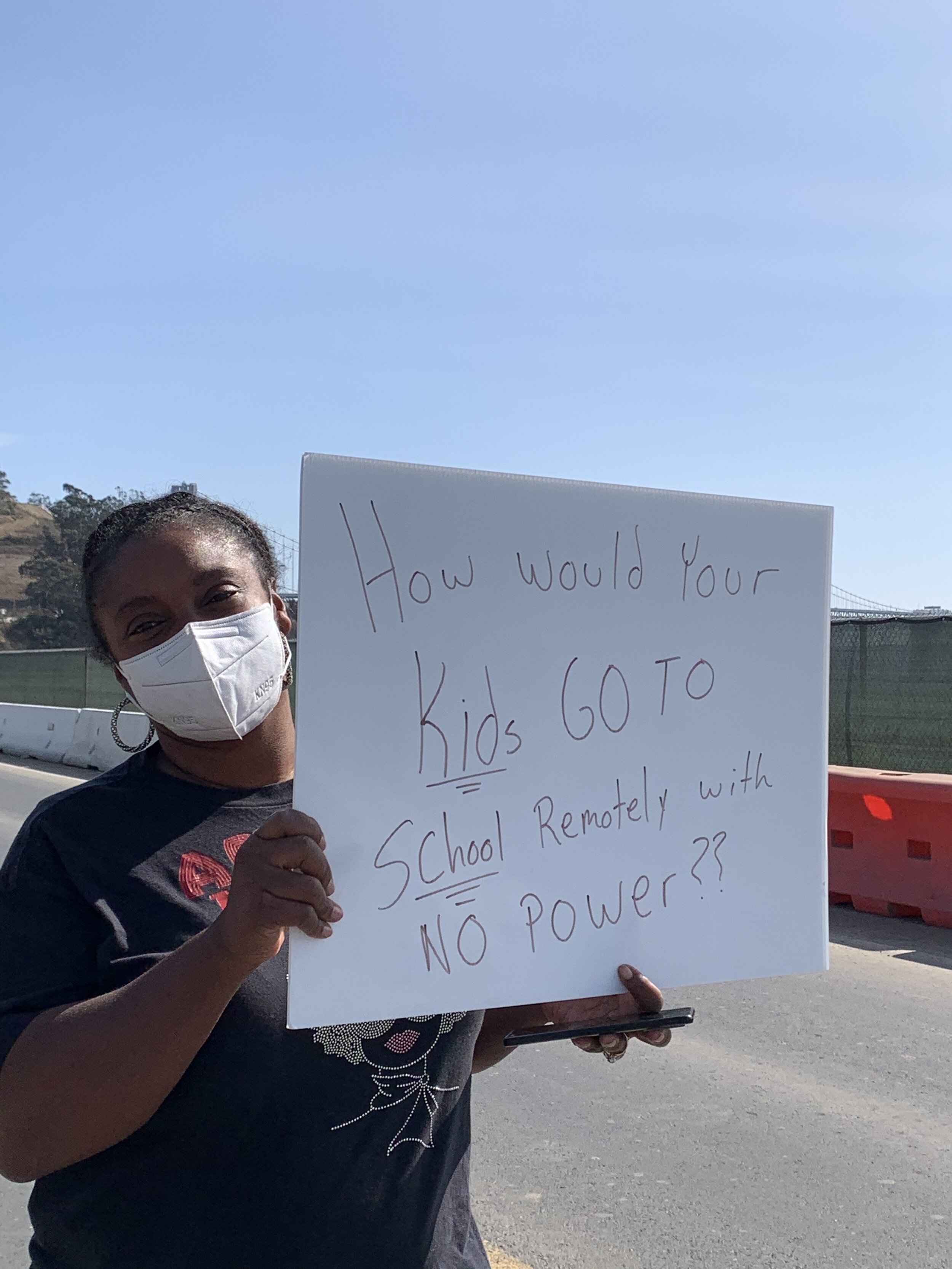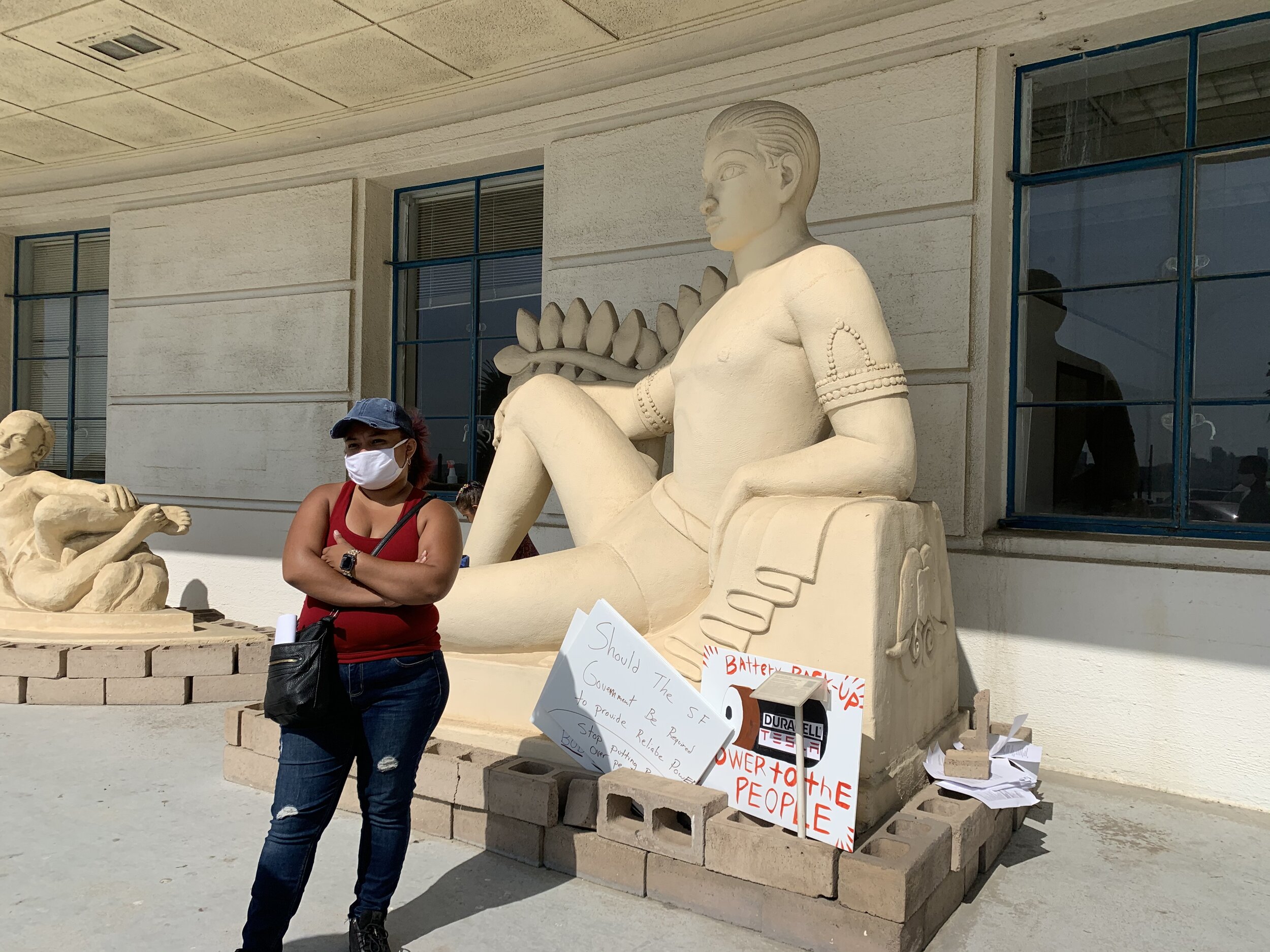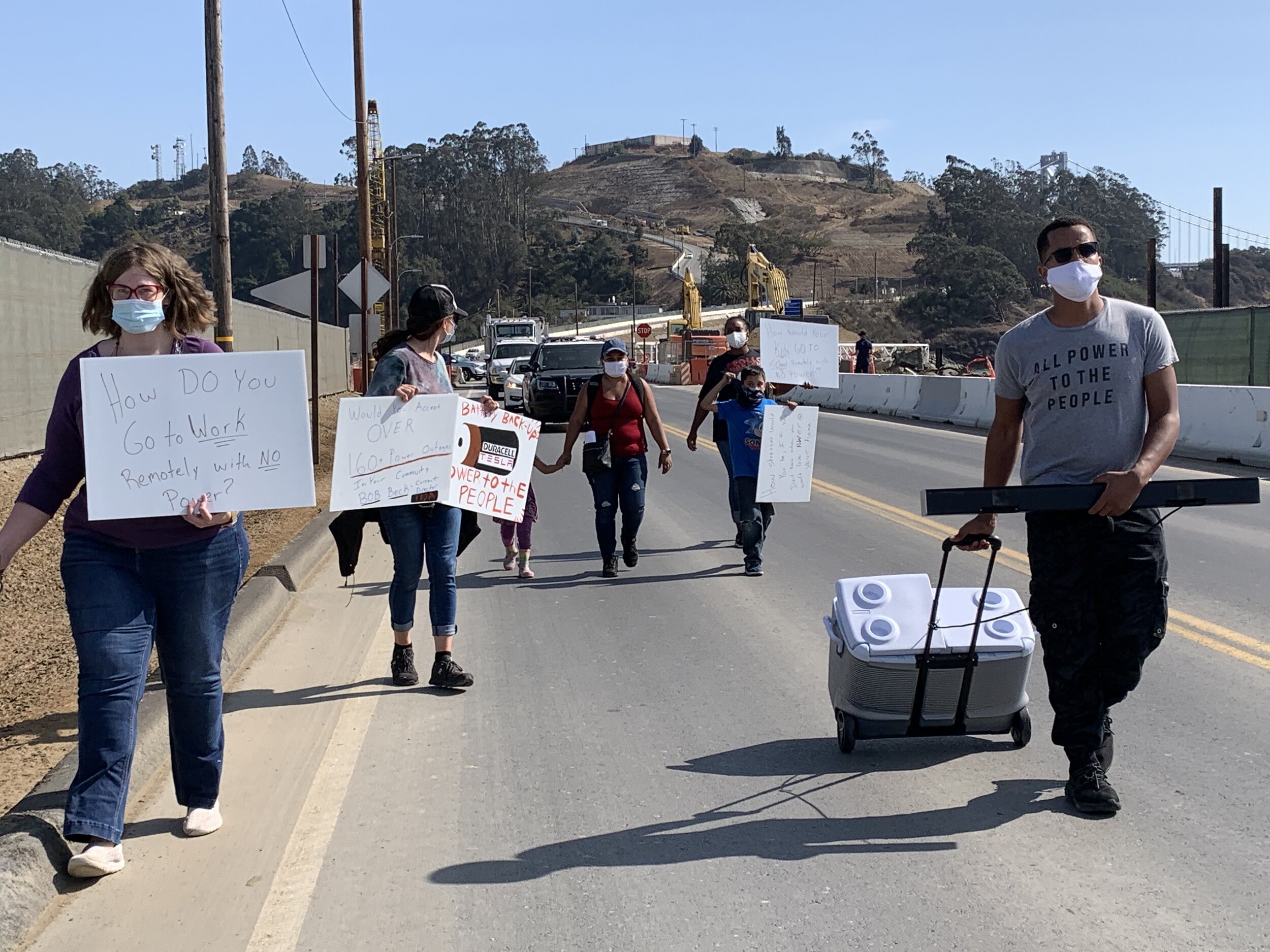Treasure Island residents continue to grapple with a persistent power outage crisis. Since 1997, they have endured more than 524 power outages, which translates to an outage every 2-3 weeks. Alarmingly, this rate is four times higher than the citywide average in San Francisco, highlighting a significant disparity in the frequency of power disruptions experienced by Treasure Island inhabitants.
“The safety and wellbeing of our residents and businesses is our first priority, and as a fundamental principle of good government, it’s our duty to deliver services San Franciscans expect and deserve,” said Mayor London Breed.
Click Here To View Current SFPUC CAC Board Resolution Demands
On July 25, 2017, under File Number: 170649, the San Francisco Board of Supervisors passed a resolution Resolution Number R0307-17, available at https://sfbos.org/sites/default/files/r0307-17.pdf, approving an emergency declaration by the San Francisco Public Utilities Commission pursuant to Administrative Code, Section 21.15(c), for the replacement of two generators that serve Treasure Island and Yerba Buena Island to ensure power reliability in the event of a significant loss of grid power, at a total estimated cost of $1,660,050, demonstrating the capacity of the city to address critical infrastructure needs and underscoring the potential for further action to mitigate the ongoing power outage issues on these islands.
On May 03, 2023 Mayor London N. Breed joined City leaders to request information on recent power outages that created significant public health and safety risks, as well as economic disruption, in a letter sent today to Pacific Gas and Electric’s (PG&E) CEO, Patricia Poppe. Signed by Mayor Breed, Board of Supervisors President Aaron Peskin, City Attorney David Chiu, and San Francisco Public Utilities Commission (SFPUC)
Watch The Full Video Below!
This article discusses how city leaders recognized a single weekend of power outages as a catalyst for greater action, especially considering the ongoing situation on Treasure Island. For 25 years, the city-managed grid on Treasure Island has experienced frequent power disruptions. This situation prompts reflection on why such frequent outages, which are reportedly four times worse than those managed by PG&E, are deemed acceptable for a city-run grid. The comparison raises questions about the standards and expectations for utility services managed by the city versus those operated by PG&E.
To sign up for AlertSF and receive notifications about power outages and other emergencies:
1 Text your zip code (94130) for Treasure Island to 888-777. This will allow AlertSF to send notifications to your registered wireless device.
2 Alternatively, you can visit the AlertSF website at www.alertsf.org and register your email address and/or phone number to receive notifications via email or phone call.
3 Follow the instructions on the website or in the text message to complete the registration process and confirm your subscription to AlertSF.
4 Once you are registered, you will receive alerts regarding power outages, traffic disruptions, and other emergency situations in Treasure Island and the surrounding areas.
By signing up for AlertSF, you can stay informed and be prepared for power outages and other emergencies. It is important to note that this service is only available for residents and visitors of San Francisco, and may not be available in other areas.
Help Spread the Word
PG&E DOES NOT OWN THE GRID ON TREASURE ISLAND TIDA DOES. But TIDA is worst in reliability than PG&E.
There’s a Legislative Blackout on Treasure Island
The situation on Treasure Island is unacceptable and needs to be addressed. It is vital that the residents have access to reliable power, as it is a basic human right and essential for a decent quality of life. It is clear that the current political system on Treasure Island has failed the residents and needs to be reformed to prioritize their needs. We demand an emergency declaration NOW, a detailed grid upgrade report & cost analysis to ensure reliability of no more than three outages in year !
The Problem
Impact on the Island
“My mom is on oxygen – on a condenser. Every time the power goes out, I’m in serious trouble
”
Treasure Island is a small island located in bay of San Francisco and Oakland. Despite its proximity to two major cities, it remains largely unknown and is often overlooked. However, it has recently become the subject of controversy due to its poor living conditions, particularly in regards to its inadequate power supply.
The Treasure Island community is made up of 60% people of color, with 50% below the federal poverty line. This means that many residents are already vulnerable and in need of support, and the ongoing power outages only add to their challenges. It is important for the government to take the necessary steps to provide long-term solutions and ensure the safety and wellbeing of the Treasure Island community.
The number of power outages on the island has been increasing since 2018, with 26 outages occurring in that year alone. These outages have not only been frustrating for residents, but have also posed a significant safety hazard. In 2019, a town hall meeting was held to address the issue, but little progress was made. The contractor responsible for servicing the island's power grid explained that it did not have the authority to use rate payers' money for improvements, and the Treasure Island Development Authority (TIDA), which does have the authority, claimed that there were no plans for upgrades until further into the redevelopment process.
The situation has only worsened in the years since. Despite the ongoing global pandemic, the government has failed to provide residents with consistent, reliable power. This lack of action has led to widespread frustration and anger among those living on the island. Many have called on the TIDA and the government to take immediate action to address the problem.
The lack of consistent power on Treasure Island is just one aspect of the overall poor living conditions on the island. In addition to the power outages, residents have also reported problems with mold and other hazardous materials in their homes. These issues have not only had a negative impact on residents' quality of life, but have also posed a serious health risk.
The root of these problems can be traced back to the island's troubled history. Treasure Island was originally built in the 1930s as a site for the 1939 Golden Gate International Exposition. After the exposition ended, the island was used as a naval base until 1997, when it was closed as part of the Base Realignment and Closure (BRAC) process. In 2002, the island was transferred to the TIDA, which has been responsible for its redevelopment ever since.
However, the redevelopment process has been plagued by delays and mismanagement. The TIDA's plans for the island include the construction of new homes, businesses, and parks, but the project has been beset by numerous setbacks. As a result, the island remains largely undeveloped, with many of its former naval buildings still standing. This has created a unique and challenging situation for those living on the island, as they must deal with the consequences of living in a partially-developed area.
Despite the challenges facing Treasure Island, there are still those who are determined to make the most of their time on the island. Many of the island's residents have formed strong communities and support networks, and are working together to address the problems they face. There are also a number of organizations and advocacy groups working to improve conditions on the island, and to bring attention to its struggles.
However, it remains unclear when, or if, the situation on Treasure Island will improve. The TIDA's plans for redevelopment are still far behind schedule, and the government's failure to address the power outage issue has only added to residents' frustration and concern. Until concrete steps are taken to address the problems facing the island, it is likely that it will continue to be San Francisco's best kept dirty little secret.
“Every time you have a power outage, our sewage is cut off completely. We have sewage backing up in our homes. We are sitting without any food, so our kids can’t eat. (It) is ridiculous that I can’t feed my cat or my children...We have to walk out and find cell reception somewhere to even respond to... attempts to communicate with us.”
The Solution
The key aspects of the resolution regarding emergency authorizations and power outages on Treasure Island, as propounded by Barklee Sanders, can be summarized as follows:
Recognition of Frequent Power Outages: Acknowledges the high frequency of power outages on Treasure Island and Yerba Buena Island, with an average of 18 per year since 1997, which is four times higher than the rate in San Francisco.
Impact on Low-Income Residents: Notes the significant impact of these outages on low-income residents, who make up 60% of the population in a specific census tract on Treasure Island and are already struggling with high housing expenses.
Entitlement to Reliable Service: States that residents are entitled to safe and reliable electric service, as per the city's public power chapter, which also provides economic benefits.
TIDA's Role and Responsibilities: Outlines the role of the Treasure Island Development Authority (TIDA) in managing development and power grid issues within the Development Plan Area, noting past failures to address the power outages sufficiently.
Lack of Direct Authority Over TIDA: Clarifies that neither the SFPUC, the Mayor, nor the Board of Supervisors have the authority to compel TIDA to stabilize the grid directly.
Disparity in Infrastructure Improvements: Points out the lack of planned improvements for the existing electrical system, which will serve current residents for another 10 to 15 years, despite new infrastructure for new developments.
Emergency Action Authorization: References city charter and administrative code provisions that authorize emergency actions to protect the public, which could apply to the situation on Treasure Island and Yerba Buena Island.
Inspection Request: Requests that TIDA conduct a comprehensive inspection of the electrical distribution system by July 2024, following utility industry standards.
Oversight and Accountability: Asks for identification of the public agency with oversight over TIDA and for TIDA to provide a detailed accounting of the $15M funds allocated for power infrastructure.
Failure Mode Analysis Report: Requests SFPUC to provide a detailed report analyzing past power outages, including various metrics and data, within six weeks of the resolution.
Corrective and Preventative Measures: Calls for SFPUC to provide a Corrective Action Plan and Preventative Maintenance Action Plan based on the failure mode analysis report to align the power grid performance with San Francisco's levels.
Collaborative Review and Assurance: Urges a collaborative review of the analysis and recommendations to ensure TIDA meets its obligations for the existing power grid's performance and maintenance.
Capital Improvement Plan: Urges TIDA to inspect the electric distribution system and develop a capital improvement plan by July 2024, addressing resilience and sustainability.
Funding for Infrastructure Sustainability: Requests that the Board of Supervisors work with TIDA and the SFPUC to secure funding for the long-term sustainability and reliability of the power infrastructure.
